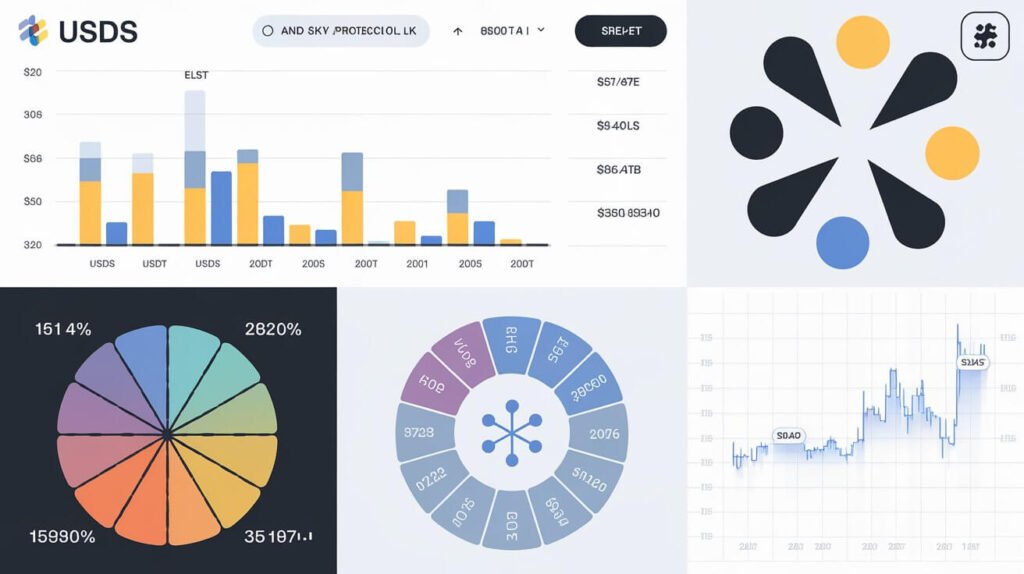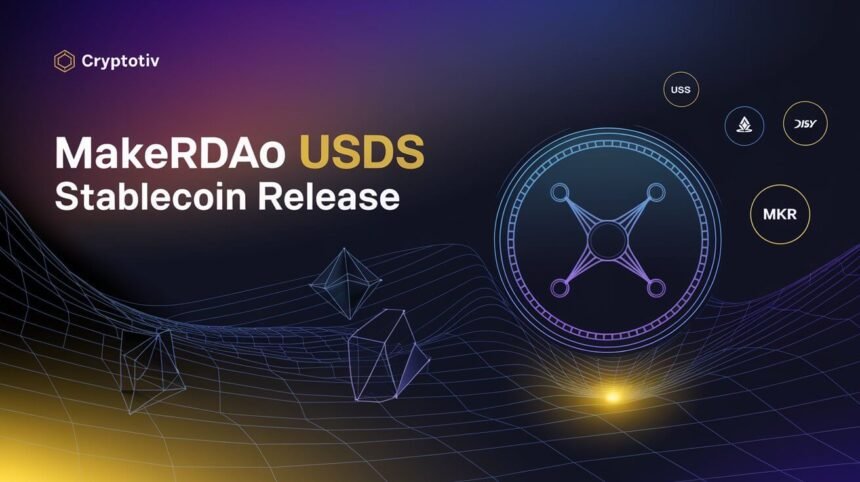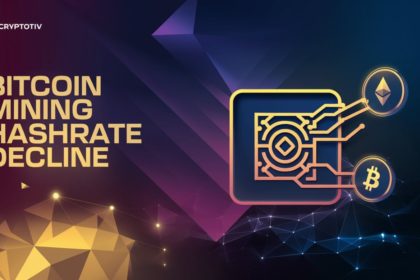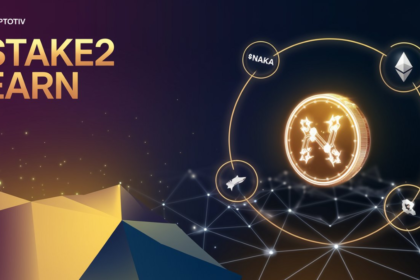The MakerDAO rebrand is a significant milestone in the decentralized finance (DeFi) landscape. By transitioning from DAI to the USDS stablecoin, and introducing the SKY governance token, MakerDAO aims to solidify its position in DeFi through the Sky protocol. This move is part of the Endgame Plan, designed to enhance scalability, decentralized governance, and regulatory compliance. These changes align with ongoing industry trends focused on improving the efficiency of blockchain systems.
Overview of MakerDAO’s Rebrand to Sky
The rebranding of MakerDAO to Sky marks a pivotal shift in the decentralized finance (DeFi) space. This rebrand is rooted in MakerDAO’s Endgame Plan, which is designed to enhance the protocol’s overall resilience, accessibility, and governance structure. The introduction of USDS as the new stablecoin and SKY as the upgraded governance token reflects MakerDAO’s commitment to remaining a leader in the DeFi ecosystem while addressing the evolving needs of its users. By transitioning to the Sky Protocol, MakerDAO positions itself for growth in a rapidly changing landscape, enhancing its capabilities to meet regulatory requirements and increasing user engagement through new incentives like the Sky Savings Rate (SSR).
The Transition from DAI to USDS Stablecoin
As part of the rebrand, USDS has been introduced to replace DAI, a long-standing stablecoin in the MakerDAO ecosystem. USDS maintains a 1:1 parity with the U.S. dollar, ensuring price stability similar to DAI. However, the key difference lies in the enhanced regulatory compliance and integration with the Sky Protocol. This stablecoin is designed to facilitate seamless swaps between DAI and USDS, giving users the option to continue holding DAI or migrate to USDS, depending on their preference. The transition also includes cross-collateralization with other assets such as USDC to ensure broader liquidity and security within the system.
USDS will play a crucial role in maintaining liquidity across decentralized finance platforms, supporting trading pairs and liquidity pools in the new Sky ecosystem. Its introduction reflects a significant step forward for the protocol, ensuring compliance with emerging regulatory standards while fostering further innovation in the stablecoin market.
Recommended paths for you:
- Top DeFi Protocols Shaping the Future of Finance.
- How Stablecoins Are Revolutionizing Crypto Payments.
- Ethereum Gas Fees for September
- The Future of Decentralized Governance in Blockchain.
- Understanding Tokenomics: From MKR to SKY.
Introduction of the SKY Governance Token
Another major change in the rebrand is the launch of the SKY governance token, which replaces MKR. The SKY token serves as the core governance mechanism within the Sky Protocol, allowing users to participate in decentralized governance more effectively than before. While MKR previously enabled voting on proposals within MakerDAO, SKY introduces a more flexible governance model that supports the broader Sky ecosystem and its decentralized autonomous organizations (DAOs), now referred to as Sky Stars.
Each Sky Star operates independently within the Sky Protocol, promoting decentralized governance and innovation. SKY tokens also empower holders by allowing them to propose changes, vote on key issues, and participate in broader decision-making processes that influence the entire ecosystem. This MKR upgrade to SKY aims to enhance the governance structure, making it more resilient and inclusive.
Key Features of the Sky Protocol
One of the most prominent is the Sky Savings Rate (SSR), which allows users to earn rewards by locking up USDS in the protocol. SSR works similarly to the DAI Savings Rate (DSR) but offers improved returns and flexibility. Additionally, the Sky Token Rewards (STR) system incentivizes governance participation and provides additional yields for those contributing to the growth and governance of the Sky ecosystem.
Below is a comparison table highlighting the key features of the Sky Protocol versus the previous MakerDAO system:
| Feature | Sky Protocol (USDS/SSR) | MakerDAO (DAI/DSR) |
|---|---|---|
| Stablecoin | USDS with regulatory compliance | DAI |
| Savings Rate | Sky Savings Rate (SSR) | DAI Savings Rate (DSR) |
| Governance Token | SKY (Replaces MKR) | MKR |
| Rewards Mechanism | STR for governance participation | No direct rewards for governance |
| Liquidity Focus | Enhanced liquidity options in Sky | Standard liquidity in Maker |
The introduction of these features is intended to provide greater incentives for user participation, both in terms of governance and liquidity provision. The new SSR and STR systems are designed to increase engagement and drive the protocol’s overall growth, supporting a more scalable and decentralized future.
How the USDS Stablecoin Will Impact DeFi

The release of the USDS stablecoin marks a pivotal advancement for decentralized finance (DeFi) under the Sky Protocol. It not only replaces DAI but also introduces improved scalability, liquidity, and compliance capabilities. By offering seamless integrations with other cryptocurrencies like ETH, USDC, and USDT, USDS is set to enhance DeFi’s overall liquidity and stability, benefiting decentralized exchanges (DEXs) and liquidity pools within the Sky ecosystem. Additionally, its support for decentralized governance ensures the protocol remains community-driven and resilient, positioning USDS as a key player in shaping the future of DeFi.
Enhanced Liquidity Through USDS
One of the core benefits of USDS in the Sky Protocol is its ability to provide superior liquidity opportunities for users. Unlike traditional stablecoins, USDS allows users to swap seamlessly between various cryptocurrencies, such as ETH, USDC, and USDT, without facing significant slippage or fees. This feature enables users to engage more freely with Sky’s liquidity pools, enhancing the overall efficiency and availability of funds within the DeFi space.
The introduction of liquidity pools powered by USDS fosters a more stable and scalable environment for DeFi protocols. It ensures that users can contribute liquidity, trade between assets, and access stable, dollar-pegged tokens, all while benefiting from the security and decentralized nature of the Sky Protocol. The robust liquidity structure also minimizes volatility, making it easier for DeFi users to hedge against market fluctuations and maintain consistent trading volumes.
By integrating cross-asset liquidity, USDS ensures that DeFi platforms like Sky can offer deeper liquidity for trading pairs, thereby reducing the risks often associated with low liquidity in decentralized markets. This enhanced liquidity will lead to increased adoption and participation in stablecoin swaps, benefiting not only institutional players but also retail traders looking for reliable and secure trading options.
Governance and Decentralization in Sky
The Sky Protocol redefines decentralized governance through the introduction of the SKY governance token, which empowers community members to actively participate in decision-making processes. Unlike traditional governance models, where centralization often plays a dominant role, Sky’s decentralized governance ensures that power is distributed among token holders, who are incentivized to contribute to the protocol’s growth and security.
SKY tokens offer holders voting rights on critical decisions, such as liquidity management, upgrades, and the overall direction of the Sky ecosystem. This model of decentralized governance is further reinforced by the introduction of Sky Stars, independent DAOs that operate within the Sky ecosystem. These Sky Stars can manage their own treasuries, launch governance tokens, and make autonomous decisions, contributing to a highly resilient and adaptable protocol.
Through the use of SKY token rewards, users are incentivized to engage with governance mechanisms, ensuring long-term stability and community-driven development. By aligning the interests of both large and small token holders, Sky fosters a democratic governance structure that supports the protocol’s mission of providing accessible and resilient decentralized finance solutions.
Key Takeaways from MakerDAO’s Endgame Plan

The Endgame Plan represents a significant strategic shift for MakerDAO, now rebranded as Sky. This plan aims to ensure that the platform remains scalable, resilient, and decentralized while positioning itself for long-term success in the DeFi landscape. The introduction of the USDS stablecoin and SKY governance token marks a major milestone in enhancing MakerDAO’s ecosystem, ensuring broader accessibility for its users. The Endgame Plan is designed to support innovations in governance, liquidity, and compliance, which are critical for the future of decentralized finance.
The Endgame Plan’s Role in Decentralized Finance
The Endgame Plan integrates seamlessly with the broader DeFi market, focusing on critical improvements in governance, liquidity, and scalability. It emphasizes restructuring governance by empowering users through the SKY token, which allows for more inclusive and decentralized decision-making. Furthermore, by enhancing liquidity pools with USDS and providing new rewards mechanisms such as the Sky Savings Rate (SSR), the Endgame Plan addresses the liquidity challenges often faced by DeFi protocols.
Checklist: Key Points of the Endgame Plan
- Governance restructuring: Introduction of SKY governance token for decentralized decision-making.
- Liquidity improvements: Enhanced liquidity pools with USDS stablecoin integration.
- Tokenomics upgrades: Implementation of new rewards mechanisms like SSR for increased user participation.
- Compliance and scalability: USDS designed to meet emerging regulatory standards and improve the scalability of the protocol.
Note
By addressing these key areas, the Endgame Plan fosters innovation and stability within the decentralized finance ecosystem, ensuring that the protocol can adapt to future market and regulatory changes while maintaining its decentralized nature.
Introduction of Sky Stars as Independent DAOs
A key innovation within the Endgame Plan is the creation of Sky Stars, which are independent decentralized autonomous organizations (DAOs) that exist within the Sky ecosystem. These DAOs, formerly known as SubDAOs under MakerDAO, are empowered to function autonomously, contributing to the protocol’s overall flexibility and scalability. Each Sky Star has the ability to manage its own treasury, create specialized governance tokens, and make decisions independently, allowing for innovation and experimentation within the broader Sky ecosystem.
Sky Stars operate as smaller, decentralized units within the Sky Protocol, promoting agility and enabling faster innovation. Their decentralized nature ensures that each DAO can adapt to specific market needs or technological advancements while remaining aligned with the overarching goals of the Sky protocol. This model promotes a more robust and scalable approach to governance, making it easier for the protocol to grow and evolve.
Challenges and Regulatory Considerations for USDS and Sky

The launch of USDS and the rebrand of MakerDAO to Sky present significant opportunities in decentralized finance (DeFi), but they also come with regulatory and operational challenges. With the increasing global scrutiny of stablecoins, USDS must navigate a complex web of regulations that vary by jurisdiction. Furthermore, the Sky Protocol must address the competitive landscape of stablecoins and differentiate itself from major players like Tether (USDT). These challenges will play a critical role in shaping the adoption and success of the Sky ecosystem.
Regulatory Hurdles for USDS Adoption
The regulatory landscape for stablecoins like USDS is rapidly evolving, and compliance is critical to its widespread adoption. Governments around the world, particularly in jurisdictions like the United States and the United Kingdom, are implementing stricter rules to ensure stablecoins adhere to financial stability standards and anti-money laundering (AML) laws.
In the US, stablecoins are often scrutinized under the lens of securities and banking regulations. USDS will need to ensure that it meets international standards for transparency, including full reserves backing and regular audits to verify its 1:1 peg with the US dollar. Additionally, regulators may impose restrictions on the use of stablecoins in specific financial activities, requiring Sky to establish clear guidelines for its use across various DeFi platforms.
Sky Protocol’s ability to comply with these regulations will be crucial in determining its market reach. In regions with stringent rules, such as the US, USDS might face barriers to entry, limiting its use among American users. To address this, Sky will need to work closely with regulators to ensure that USDS adoption is smooth and fully compliant with local laws.
Competition with Other Stablecoins
In the broader stablecoin market, USDS will face stiff competition from established stablecoins like Tether (USDT) and USD Coin (USDC). Tether, in particular, dominates the market with the highest trading volume and liquidity across decentralized and centralized exchanges. To carve out its niche, Sky must offer features that differentiate USDS from other stablecoins.
One key differentiator for USDS is its deeper integration with the Sky Protocol, which provides enhanced liquidity options and governance mechanisms. While Tether and USDC primarily serve as trading pairs and store of value assets, USDS is directly tied to the governance of the Sky ecosystem. This integration allows users to participate in the decentralized governance model through Sky Stars, earn rewards via the Sky Savings Rate (SSR), and benefit from a more robust DeFi infrastructure.
Note
USDS could leverage its regulatory compliance as a competitive advantage. While Tether has faced criticism for its opaque reserve practices, Sky aims to maintain full transparency with regular audits and regulatory oversight, which could attract users looking for a more stable and trustworthy stablecoin solution.
The MakerDAO to Sky rebrand is a pivotal move in the decentralized finance (DeFi) space. The introduction of the USDS stablecoin and SKY governance token are key components of the Endgame Plan, aimed at enhancing governance, scalability, and regulatory compliance. By addressing liquidity challenges and enabling seamless stablecoin swaps, USDS opens up new opportunities within the DeFi ecosystem. Additionally, Sky’s decentralized governance model, powered by SKY tokens and supported by Sky Stars DAOs, fosters innovation and resilience in DeFi.
However, the success of this transformation will depend on how well Sky navigates regulatory hurdles, especially in regions like the United States and the United Kingdom, and how effectively it differentiates itself from dominant stablecoins like Tether (USDT). With a clear focus on compliance, scalability, and decentralized governance, the Sky Protocol is positioned to be a significant player in the future of decentralized finance.



















